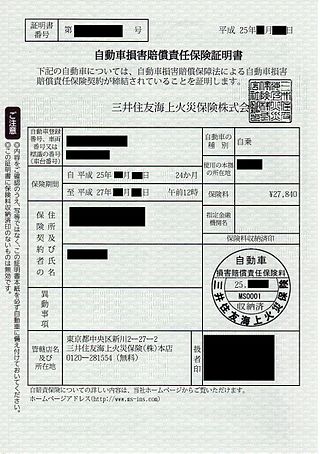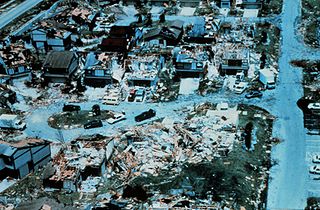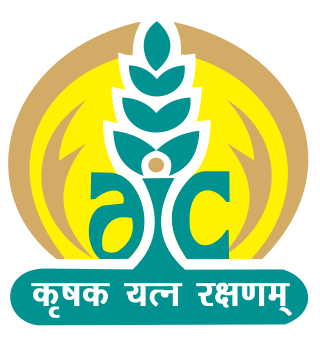Related Research Articles

Insurance is a means of protection from financial loss in which, in exchange for a fee, a party agrees to compensate another party in the event of a certain loss, damage, or injury. It is a form of risk management, primarily used to protect against the risk of a contingent or uncertain loss.

Life insurance is a contract between an insurance policy holder and an insurer or assurer, where the insurer promises to pay a designated beneficiary a sum of money upon the death of an insured person. Depending on the contract, other events such as terminal illness or critical illness can also trigger payment. The policyholder typically pays a premium, either regularly or as one lump sum. The benefits may include other expenses, such as funeral expenses.

Vehicle insurance is insurance for cars, trucks, motorcycles, and other road vehicles. Its primary use is to provide financial protection against physical damage or bodily injury resulting from traffic collisions and against liability that could also arise from incidents in a vehicle. Vehicle insurance may additionally offer financial protection against theft of the vehicle, and against damage to the vehicle sustained from events other than traffic collisions, such as keying, weather or natural disasters, and damage sustained by colliding with stationary objects. The specific terms of vehicle insurance vary with legal regulations in each region.

Reinsurance is insurance that an insurance company purchases from another insurance company to insulate itself from the risk of a major claims event. With reinsurance, the company passes on ("cedes") some part of its own insurance liabilities to the other insurance company. The company that purchases the reinsurance policy is referred to as the "ceding company" or "cedent". The company issuing the reinsurance policy is referred to as the "reinsurer". In the classic case, reinsurance allows insurance companies to remain solvent after major claims events, such as major disasters like hurricanes or wildfires. In addition to its basic role in risk management, reinsurance is sometimes used to reduce the ceding company's capital requirements, or for tax mitigation or other purposes.

Earthquake insurance is a form of property insurance that pays the policyholder in the event of an earthquake that causes damage to the property. Most ordinary homeowners insurance policies do not cover earthquake damage.
Home insurance, also commonly called homeowner's insurance, is a type of property insurance that covers a private residence. It is an insurance policy that combines various personal insurance protections, which can include losses occurring to one's home, its contents, loss of use, or loss of other personal possessions of the homeowner, as well as liability insurance for accidents that may happen at the home or at the hands of the homeowner within the policy territory.
Underwriting (UW) services are provided by some large financial institutions, such as banks, insurance companies and investment houses, whereby they guarantee payment in case of damage or financial loss and accept the financial risk for liability arising from such guarantee. An underwriting arrangement may be created in a number of situations including insurance, issues of security in a public offering, and bank lending, among others. The person or institution that agrees to sell a minimum number of securities of the company for commission is called the underwriter.
Crop insurance is insurance purchased by agricultural producers and subsidized by a country's government to protect against either the loss of their crops due to natural disasters, such as hail, drought, and floods ("crop-yield insurance", or the loss of revenue due to declines in the prices of agricultural commodities.
Liability insurance is a part of the general insurance system of risk financing to protect the purchaser from the risks of liabilities imposed by lawsuits and similar claims and protects the insured if the purchaser is sued for claims that come within the coverage of the insurance policy.

Catastrophe bonds are risk-linked securities that transfer a specified set of risks from a sponsor to investors. They were created and first used in the mid-1990s in the aftermath of Hurricane Andrew and the Northridge earthquake.
Critical illness insurance, otherwise known as critical illness cover or a dread disease policy, is an insurance product in which the insurer is contracted to typically make a lump sum cash payment if the policyholder is diagnosed with one of the specific illnesses on a predetermined list as part of an insurance policy.

Aviation insurance is insurance coverage geared specifically to the operation of aircraft and the risks involved in aviation. Aviation insurance policies are distinctly different from those for other areas of transportation and tend to incorporate aviation terminology, as well as terminology, limits and clauses specific to aviation insurance.
Stop-loss insurance is insurance that protects insurers against large claims. Stop-loss policies take effect after a certain threshold has been exceeded in claims.
Expatriate insurance are insurance policies that are designed to cover financial and other risks incurred specifically by expatriates while living and working in a country other than one's own. The insurances that expatriates need are similar to individuals living in the country but may be more complex to arrange because they are not native. There may also be specific risks for high-risk areas of the world where specialty insurance can provide coverage for war and terrorism, kidnap and ransom.

Agriculture Insurance Company of India Limited (AIC) is an Indian public sector undertaking headquartered in New Delhi. It is a government-owned agricultural insurer under ownership of the Ministry of Finance, Government of India.
An insurance-linked security (ILS) is a financial instrument whose value is driven by insurance loss events. Those such instruments that are linked to property losses due to natural catastrophes represent a unique asset class, the return from which is uncorrelated with that of the general financial market.
Insurability can mean either whether a particular type of loss (risk) can be insured in theory, or whether a particular client is insurable for by a particular company because of particular circumstance and the quality assigned by an insurance provider pertaining to the risk that a given client would have.
Caribbean Catastrophe Risk Insurance Facility Segregated Portfolio Company is an insurance company headquartered in the Cayman Islands. The sixteen original member-countries of CCRIF included participants in CARICOM, and the membership of the Board of Directors is selected by CARICOM and by the Caribbean Development Bank.

Vehicle insurance in France is an compensation-based insurance policy for terrestrial motor vehicles that are insured in France and circulate on French territory, as well as in the European Economic Area and the Green Card zone.
The effects of climate change on extreme weather events is requiring the insurance industry in the United States to recalculate risk assessments for various insurance policies. From 2013 to 2023, U.S. insurance companies paid $655.7 billion in natural disaster claims with the $295.8 billion paid from 2020 to 2022 setting a record for a three-year period, and after only the Philippines, the United States loses the largest share of its gross domestic product annually of any country due to natural disasters while having the greatest annual economic losses in absolute terms.
References
- 1 2 Sengupta and Kousky (September 2020). "Parametric Insurance for Disasters" (PDF). Wharton Risk Center Primer.
- ↑ Unnava, Vaasavi (June 17, 2020). "Understanding Parametric Triggers in Catastrophe Insurance". Yale School of Management Program on Financial Stability Systemic Risk Blog.
- ↑ Kousky and Shabman (December 2015). "A Proposed Design for Community Flood Insurance" (PDF). Resources for the Future.
- ↑ Reguero, Borja G.; Secaira, Fernando; Toimil, Alexandra; Escudero, Mireille; Díaz-Simal, Pedro; Beck, Michael W.; Silva, Rodolfo; Storlazzi, Curt; Losada, Iñigo J. (2019). "The Risk Reduction Benefits of the Mesoamerican Reef in Mexico". Frontiers in Earth Science. 7: 125. Bibcode:2019FrEaS...7..125G. doi: 10.3389/feart.2019.00125 . hdl: 10902/16346 . ISSN 2296-6463. S2CID 167208358.
- ↑ Ruckelshaus, Mary; Reguero, Borja G.; Arkema, Katie; Compeán, Roberto Guerrero; Weekes, Khafi; Bailey, Allison; Silver, Jessica (2020-12-01). "Harnessing new data technologies for nature-based solutions in assessing and managing risk in coastal zones". International Journal of Disaster Risk Reduction. 51: 101795. doi: 10.1016/j.ijdrr.2020.101795 . ISSN 2212-4209.
- ↑ The Nature Conservancy. "A REEF INSURANCE PRIMER: Hurricane damages to reefs, repair and restoration options and costs" (PDF). The Nature Conservancy.
- ↑ "Parametric insurance policy to cover Mexico coral reef". Business Insurance. Retrieved 2020-11-13.
- ↑ Einhorn, Catrin; Flavelle, Christopher; Berehulak, Daniel (2020-12-05). "A Race Against Time to Rescue a Reef From Climate Change". The New York Times. ISSN 0362-4331 . Retrieved 2020-12-12.
- ↑ World Bank (March 2012). "Caribbean Catastrophe Risk Insurance Facility (CCRIF)" (PDF). World Bank.
- ↑ Traill, David (April 29, 2020). "Press Release: Tonga To Receive Record Insurance Payout Following Cyclone Harold" (PDF).
- ↑ Wood, Daniel. "Size matters: Mainstay Underwriting launches parametric hail insurance". www.insurancebusinessmag.com. Retrieved 2022-04-12.